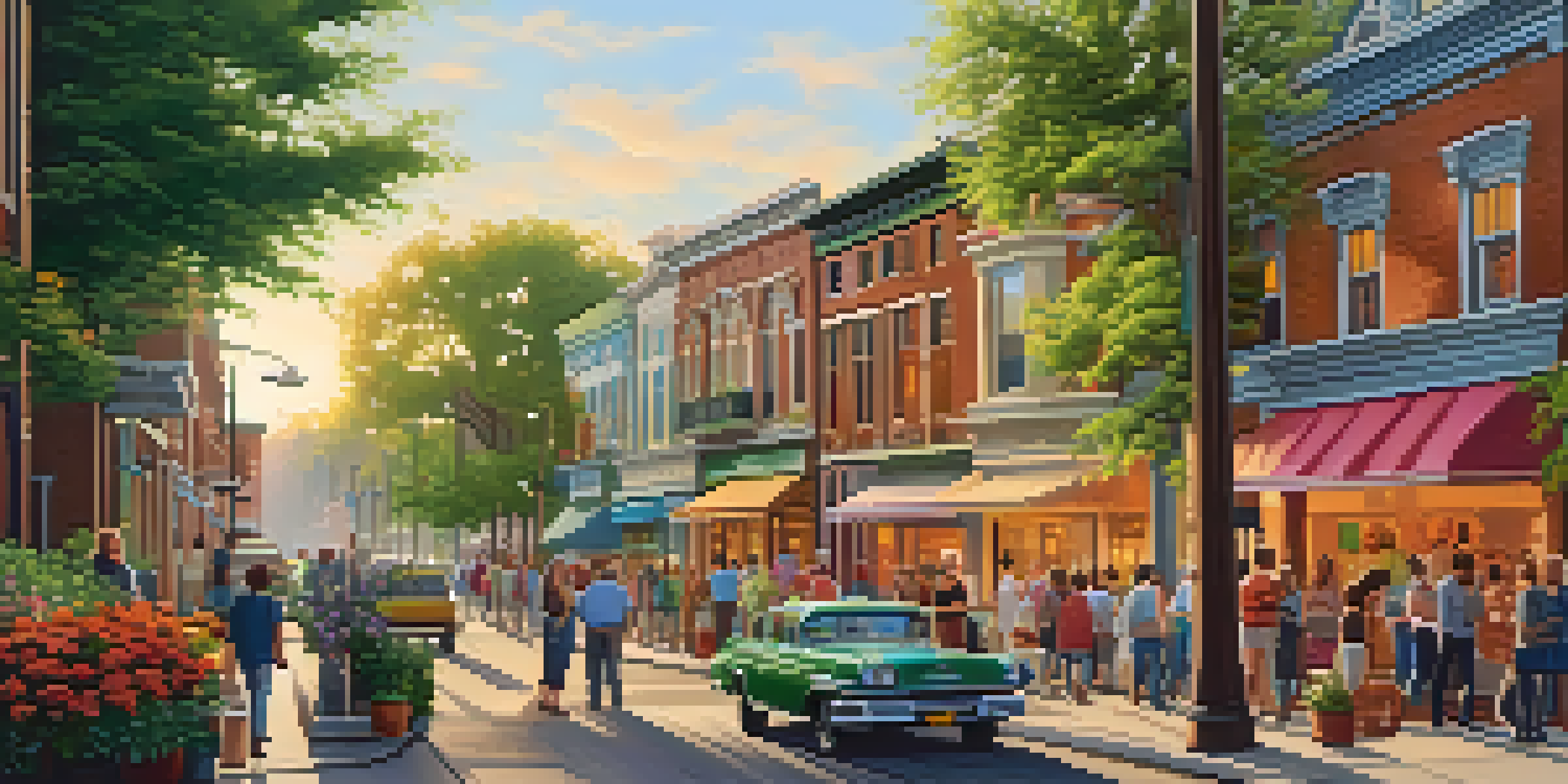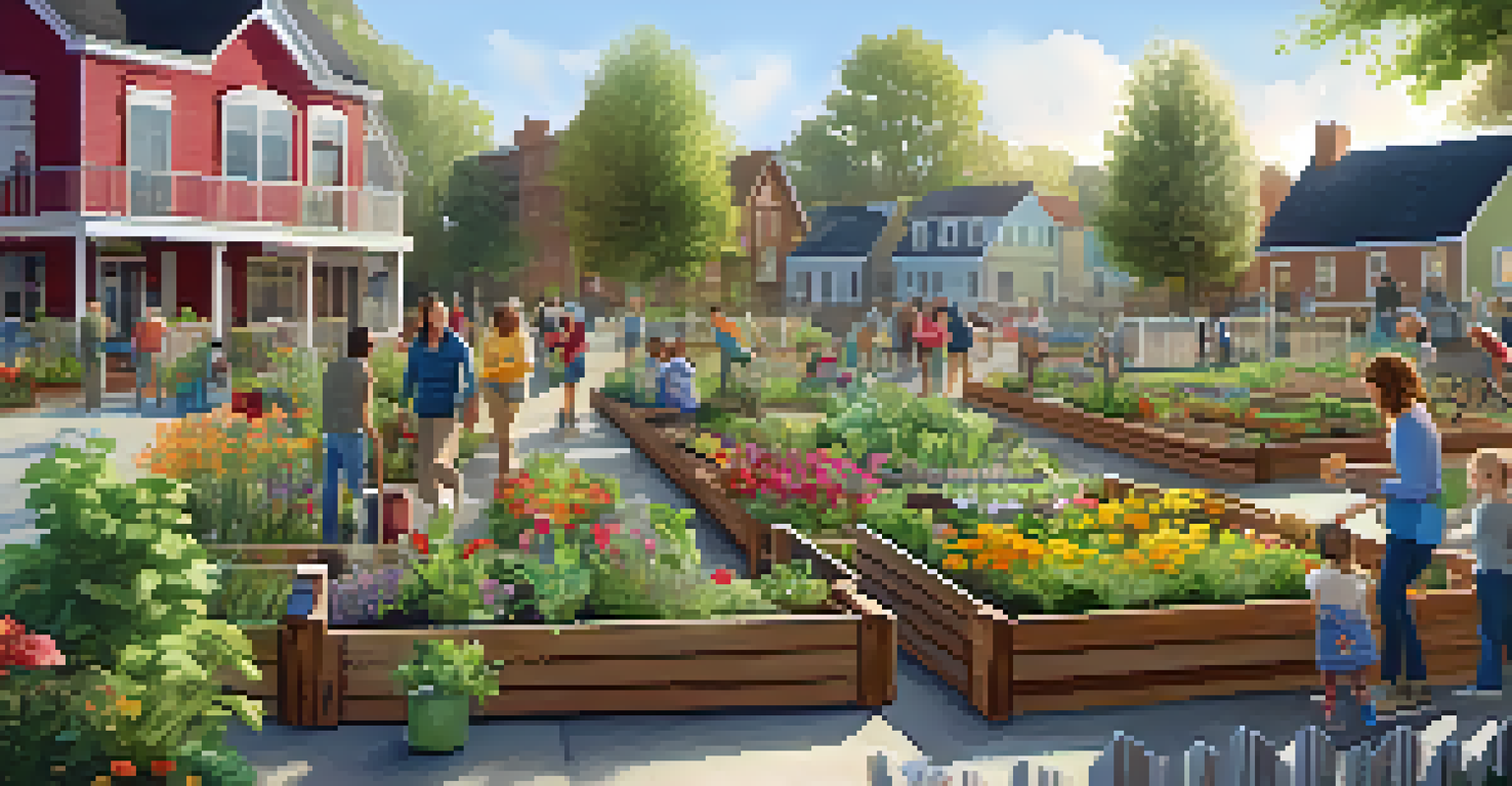Revitalizing Historic Neighborhoods: A Community Approach

The Importance of Historic Neighborhood Revitalization
Historic neighborhoods are more than just a collection of old buildings; they represent the heart and soul of a community. Revitalizing these areas can preserve cultural heritage while encouraging economic growth. By restoring historic sites, communities can attract tourism and investment, creating a vibrant atmosphere that benefits everyone.
Historic preservation is not just about saving old buildings; it's about saving the stories that make our communities unique.
Moreover, revitalization can foster a sense of pride among residents. When people see their neighborhoods being cared for and improved, it strengthens their connection to the area. It’s not just about preserving the past; it’s about creating a legacy for future generations to enjoy.
Finally, revitalization can lead to an increase in property values. A well-maintained historic district can become a desirable place to live, drawing in new residents and businesses. This, in turn, contributes to the overall economic health of the community, making it a win-win situation.
Community Engagement: The Key to Successful Revitalization
Engaging the community is essential for any successful revitalization project. When residents are involved in the planning process, they are more likely to support and participate in the changes. This can lead to innovative ideas and solutions that truly reflect the needs and desires of the people who live there.

Community meetings, workshops, and surveys are effective ways to gather input and foster collaboration. These platforms not only provide valuable feedback but also create a sense of ownership among residents. When people feel that their voices are heard, they become more invested in the success of the project.
Revitalization Preserves Culture
Restoring historic neighborhoods not only preserves cultural heritage but also enhances community pride and economic growth.
Additionally, collaboration can strengthen community bonds. Working together on revitalization efforts fosters relationships among neighbors, creating a stronger, more interconnected community. This unity is vital for facing future challenges and ensuring long-term success in maintaining the vibrancy of the neighborhood.
Incorporating Sustainable Practices in Revitalization Efforts
Sustainability should be at the forefront of any revitalization initiative. By incorporating green practices, communities can reduce their environmental impact while enhancing the quality of life for residents. This can include using energy-efficient materials, creating green spaces, and promoting public transportation.
The best way to predict the future is to create it.
For example, transforming vacant lots into community gardens or parks not only beautifies the neighborhood but also provides residents with fresh produce and recreational options. Such initiatives can boost community morale and encourage healthy living, making the neighborhood more attractive.
Moreover, sustainable practices can often lead to cost savings in the long run. When buildings are renovated with energy-efficient elements, homeowners can save on utility bills. This financial benefit can encourage more people to invest in their properties, contributing to the overall revitalization of the area.
Preserving Cultural Heritage in Revitalization Projects
Cultural heritage is a vital aspect of any community, and it should be preserved during revitalization efforts. This means not just restoring old buildings, but also honoring the stories and traditions that make the neighborhood unique. Incorporating local art, history, and cultural events can enrich the revitalization process.
For instance, murals depicting the neighborhood's history or festivals celebrating local traditions can create a sense of pride and identity. These elements not only attract visitors but also strengthen the bonds among residents, making them feel more connected to their roots.
Community Engagement is Essential
Involving residents in revitalization planning fosters ownership and leads to innovative solutions that reflect community needs.
By focusing on cultural preservation, communities can create a more inclusive environment that respects the past while looking to the future. This balance is essential for ensuring that revitalization efforts are meaningful and beneficial for everyone involved.
The Role of Local Businesses in Neighborhood Revitalization
Local businesses play a crucial role in revitalizing historic neighborhoods. They not only contribute to the economy but also help shape the character of the area. Supporting these businesses can lead to a unique and vibrant atmosphere that attracts both residents and tourists.
Encouraging local entrepreneurs to set up shop can also create job opportunities and foster a sense of community. When people support their local economy, it builds relationships and strengthens the social fabric of the neighborhood. This sense of community can be a significant draw for new residents looking for a welcoming place to call home.
Moreover, hosting events that promote local businesses, such as farmers' markets or craft fairs, can further enhance the neighborhood's appeal. These gatherings provide a platform for local artisans and vendors, creating a lively atmosphere that brings people together and supports the economic ecosystem.
The Impact of Government Policies on Revitalization Efforts
Government policies can significantly influence the success of revitalization projects. By offering incentives such as tax breaks or grants, local governments can encourage property owners and businesses to invest in their neighborhoods. These initiatives often make it financially feasible to undertake restoration projects that might otherwise be too costly.
Additionally, zoning laws and regulations can either hinder or facilitate revitalization efforts. By creating more flexible zoning policies that allow for mixed-use developments, governments can attract diverse businesses and residents to the area. This flexibility can lead to a dynamic neighborhood that meets the needs of its community.
Sustainable Practices Benefit All
Incorporating green practices in revitalization efforts improves quality of life and reduces environmental impact while saving costs.
Finally, collaborating with local government can enhance community engagement. When residents see that their leaders are invested in their neighborhood's future, they are more likely to participate in revitalization efforts. This partnership can lead to innovative solutions and a stronger sense of community ownership.
Measuring Success in Neighborhood Revitalization
Measuring the success of revitalization efforts is crucial for understanding their impact and guiding future initiatives. Key performance indicators (KPIs) may include increases in property values, foot traffic, and local business growth. These metrics can help communities assess what’s working and where improvements are needed.
Additionally, gathering feedback from residents can provide valuable insights into the effectiveness of revitalization efforts. Surveys and community forums can reveal how residents feel about the changes and whether their needs are being met. This ongoing dialogue can help ensure that revitalization efforts remain relevant and beneficial.

Lastly, success should also be measured in terms of community engagement and satisfaction. A thriving neighborhood is one where residents feel connected and invested in their community. By prioritizing these aspects, communities can create lasting changes that enhance both quality of life and neighborhood appeal.